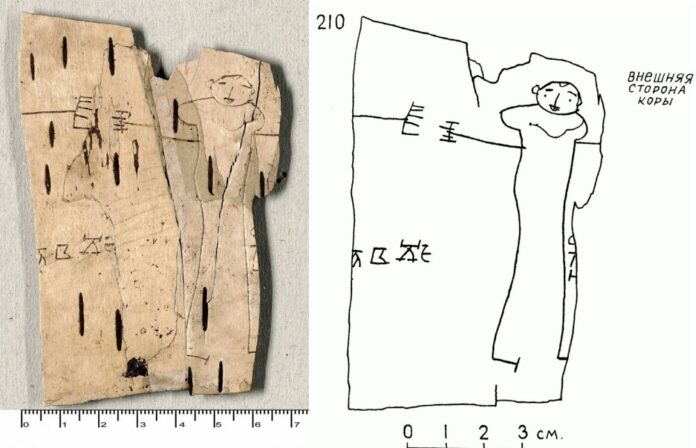In the thirteenth century city of Novgorod, a seven-year-old boy named Onfim left behind a remarkable legacy. His simple yet captivating drawings on birchbark have transcended time, offering a unique window into the life and imagination of a medieval child. Onfim’s sketches are not revolutionary in the grand scheme of history, but they are profoundly human and endearingly relatable, evoking a sense of timelessness and universality in the mundane details of his young life.
The Drawings of Onfim
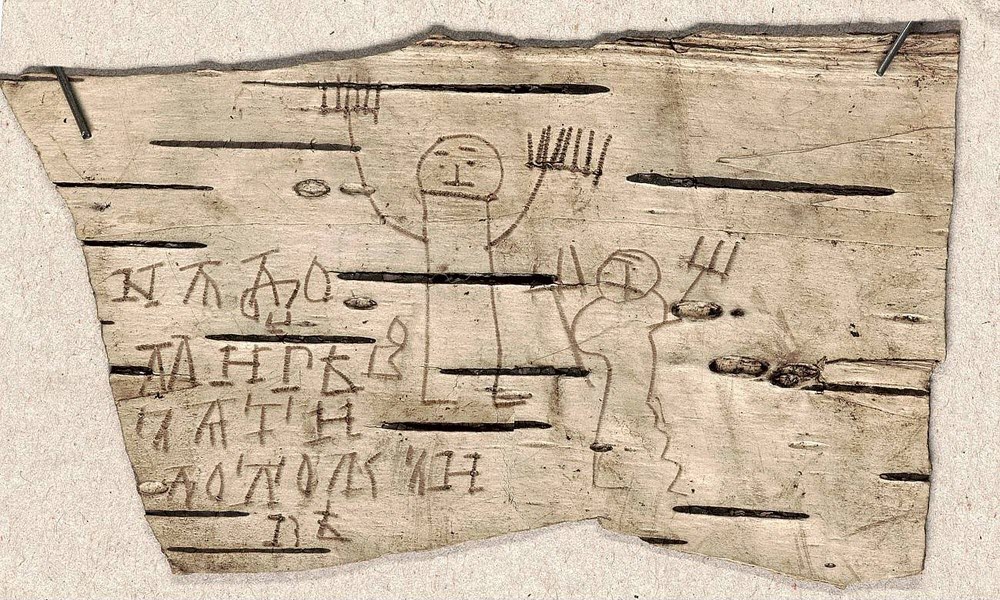
Onfim’s drawings are reminiscent of the kind of whimsical scribbles children have created throughout history. One drawing features a catlike creature alongside the words “I am a wild beast” written in Cyrillic script. This particular piece also includes a greeting, “Greetings from Onfim to Daniel,” suggesting it was intended for a friend. Another fragment shows a knightly figure on horseback, piercing an enemy, with Onfim’s name proudly inscribed above, as if to label himself as the heroic figure.
In a separate piece, Onfim depicted a stick-figure boy battling a multi-headed creature, akin to a Hydra, accompanied by the plea, “Lord, help your servant Onfim,” seeking divine aid in his imaginary battle. These drawings, filled with childlike wonder and creativity, serve as a testament to Onfim’s vivid imagination and his boredom with school assignments.
Onfim’s Legacy
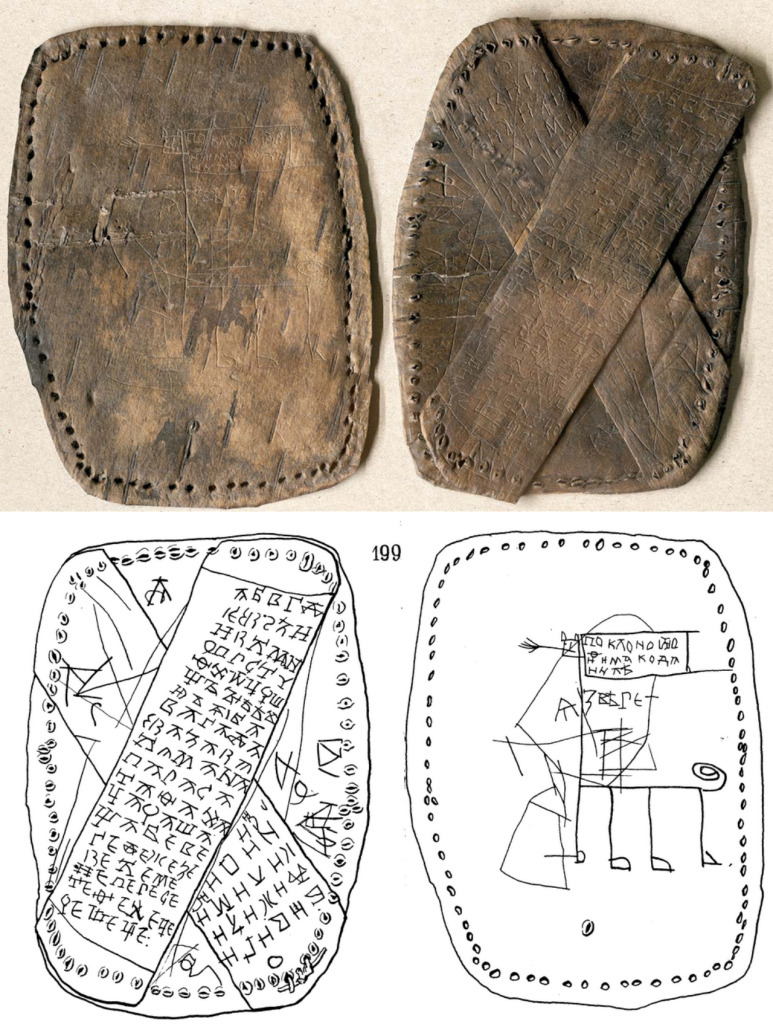
Onfim’s sketches resonate on a deeply personal level, tapping into a universal maternal instinct. His preserved birchbark scraps have granted him a sort of eternal life, immortalizing a moment in time where a young boy dreams of knightly valor while struggling through his lessons. Unlike the countless children whose drawings have faded into oblivion, Onfim’s seventeen preserved works have allowed us to glimpse the inner world of a medieval child.
One can only speculate about Onfim’s future. He might have grown up to be a grandfather, a scribe, or even fulfilled his dream of becoming a famous warrior. Regardless of his fate, to us, he remains forever a little boy with grand dreams, his work capturing a sense of timeless innocence and creativity.
Novgorod: A Medieval Hub of Literacy
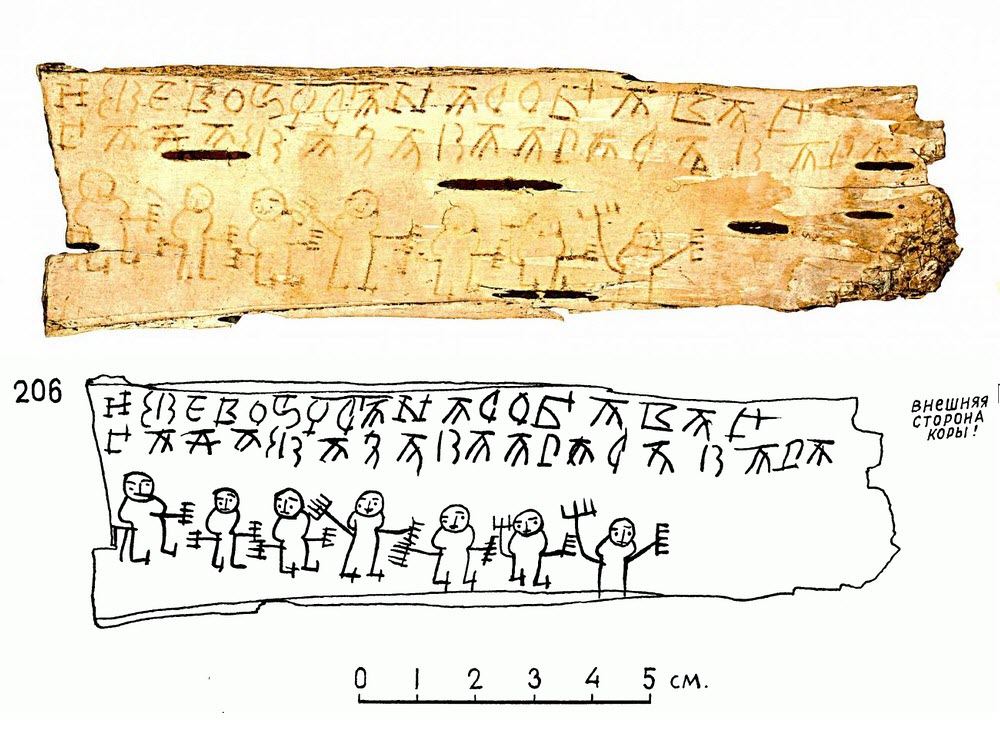
Onfim’s city, Novgorod, was a bustling medieval trade hub beginning in the ninth century. The city’s population had unusually high literacy rates, and its wet, low-oxygen soil has preserved numerous relics, providing a wealth of historical insight. Since 1951, over a thousand birchbark documents have been unearthed, filled with the voices of ordinary people from the past.
These documents reveal the daily lives and concerns of Novgorod’s inhabitants. For instance, a note from around 1380 details a man named Boris requesting shirts he had forgotten, while another document shows a father informing his son of the current price of salt. Between 1280 and 1300, a man named Mikita proposed marriage to a woman named Anna, writing, “I want you, and you me.”
Timeless Human Experience
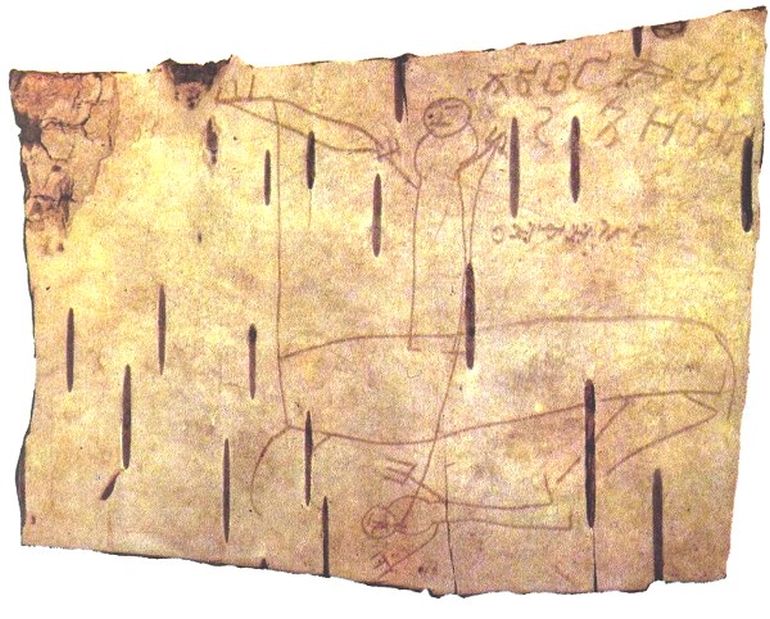
Onfim’s drawings remind us that the essence of human experience has remained unchanged for thousands of years. While a few individuals focused on laws and other historical affairs, most people spent their lives falling in love, cooking dinner, or doodling in the margins. Onfim’s drawings offer a poignant reminder of the complex inner lives of our ancestors, proving that they were neither brutish nor simple.
Conclusion
Onfim’s birchbark drawings provide a touching glimpse into the past, highlighting the universal nature of childhood imagination and creativity. Through his preserved sketches, Onfim has achieved a form of immortality, forever capturing the essence of a young boy’s dreams in medieval Novgorod. His drawings are a testament to the timeless nature of human creativity, reminding us of the intricate interior lives of those who came before us.
